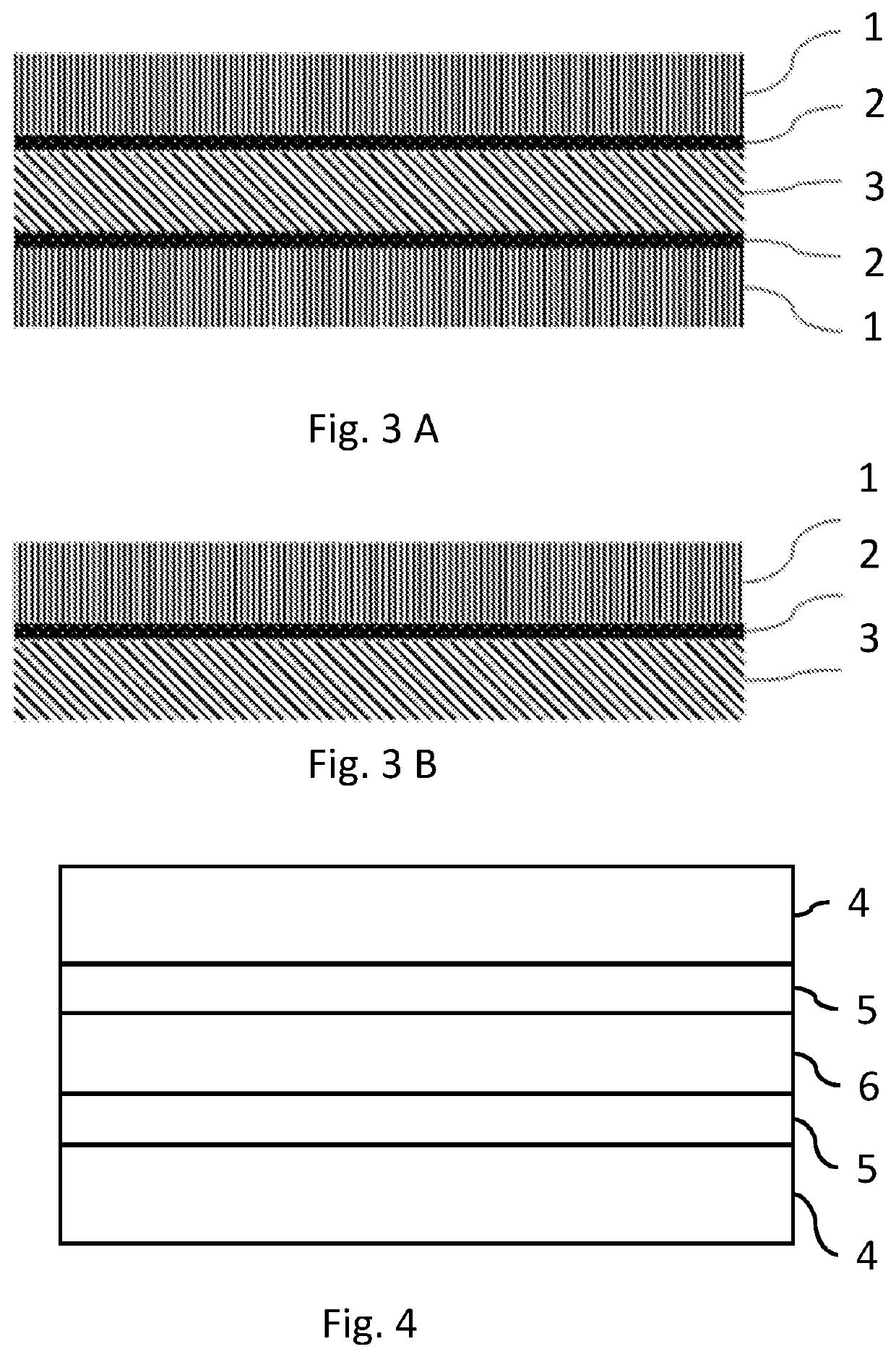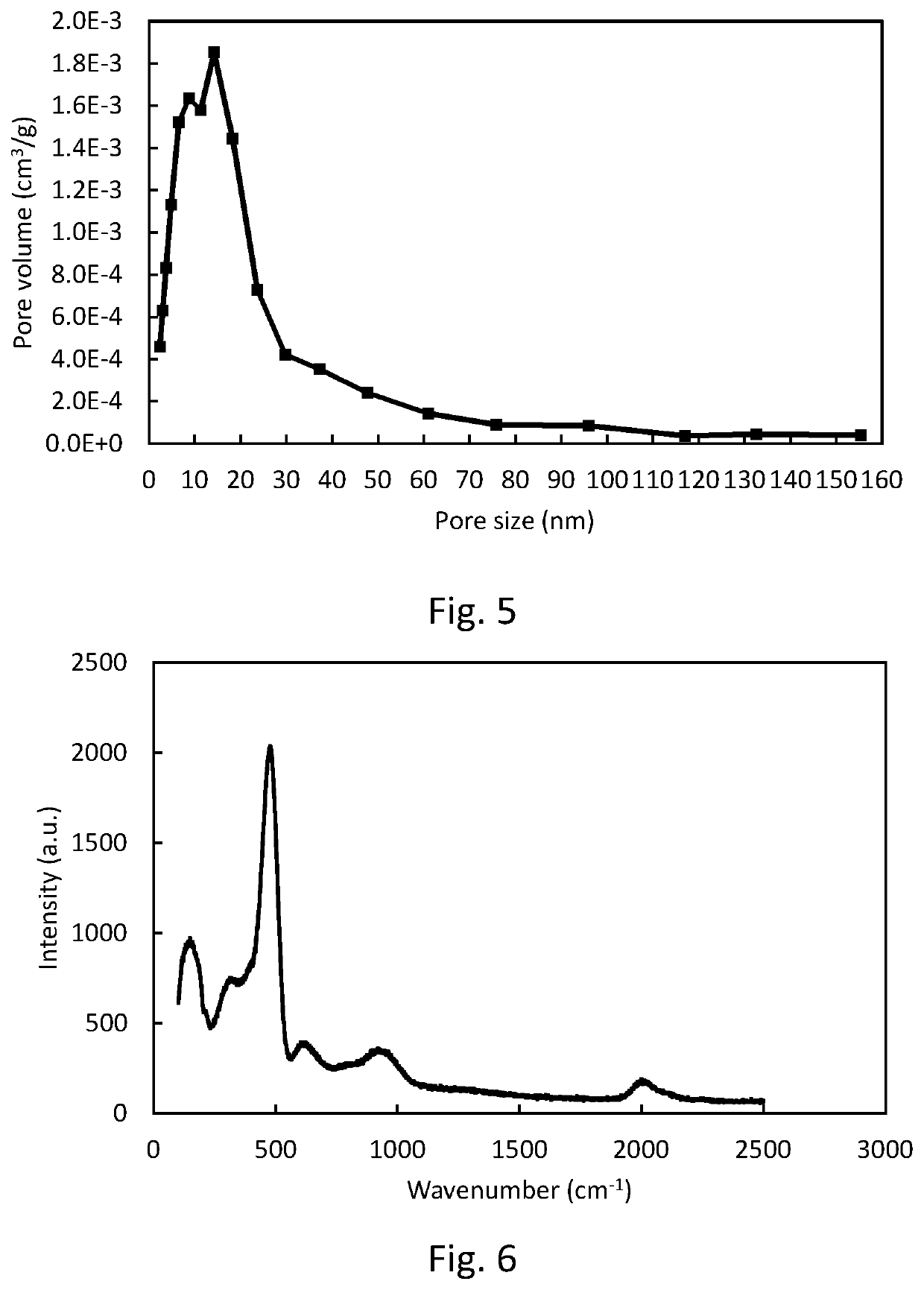Silicon composition material for use as battery anode
a composition material and battery technology, applied in the field of composite materials of silicon, can solve the problems of limiting the specific capacity of li-ion batteries, li-si electrodes experiencing a high degree of pulverization and exfoliation during lithiation, and shorter battery life, so as to reduce capacity fading, increase storage capacity per unit weight, and improve the effect of stability
- Summary
- Abstract
- Description
- Claims
- Application Information
AI Technical Summary
Benefits of technology
Problems solved by technology
Method used
Image
Examples
example 1
[0082]The copper foil that gave good adhesion was prepared with an electrodeposition process that also includes electrochemical deposition of a thin ZnO layer (foil 1 in FIG. 10). Next to that a copper foil with a deposited Cr2O3 coating also prepared with electrodeposition (foil 2 in FIG. 10) and a copper foil with a Al-doped ZnO coating deposited by sputtering on top of a thin Cr2O3 layer deposited with electrodeposition (foil 3 in FIG. 10) was prepared. The elemental compositions of the copper foil surfaces was measured using X-ray photoelectron spectroscopy. The results of the measurements given in table 1 show that the surface of the copper foil is covered with a layer of metal oxide, being ZnO, Cr2O3 or Al-doped ZnO.
TABLE 1Elemental composition of the surface of the prepared anode,measured with X-ray photoelectron spectroscopy.ElementCuAlZnCrCOPSClNPeak2 p2 s2 p2 p1 s1 s2 s2 p2 p1 sFoil 12.6017.4020.056.82.20.90.30.1Foil 214.40010.219.055.5000.60.3Foil 30.71.110.82.853.031.500...
example 2
[0085]The cycling stability of electrodes produced with copper foil comprising a zinc oxide adhesion layer are compared to copper foils comprising a coating made of chromate, and a foil that had no adhesion layer. All foils are 8-10 micron thick. Lithium metal was used as counter electrode, which in this example made the silicon-containing copper foils act as the cathode rather than as anode. As these experiments were used for comparison and stability tests, the results can be extrapolated to an electrode layer comprising silicon as anode.
[0086]The electrode that was produced without any adhesion layer was not mechanically stable and could not be used to make a coin cell. Therefore, there are no electrochemical measurements available.
[0087]The electrodes made with copper foils that had chromate and zinc oxides coatings were placed in a coin cell. The electrolyte used comprised LiPF6, with a concentration of 1 M, in a 1:1 by volume mixture of ethylene carbonate and di-ethyl carbonate...
PUM
| Property | Measurement | Unit |
|---|---|---|
| thickness | aaaaa | aaaaa |
| thickness | aaaaa | aaaaa |
| porosity | aaaaa | aaaaa |
Abstract
Description
Claims
Application Information
 Login to View More
Login to View More - R&D
- Intellectual Property
- Life Sciences
- Materials
- Tech Scout
- Unparalleled Data Quality
- Higher Quality Content
- 60% Fewer Hallucinations
Browse by: Latest US Patents, China's latest patents, Technical Efficacy Thesaurus, Application Domain, Technology Topic, Popular Technical Reports.
© 2025 PatSnap. All rights reserved.Legal|Privacy policy|Modern Slavery Act Transparency Statement|Sitemap|About US| Contact US: help@patsnap.com



